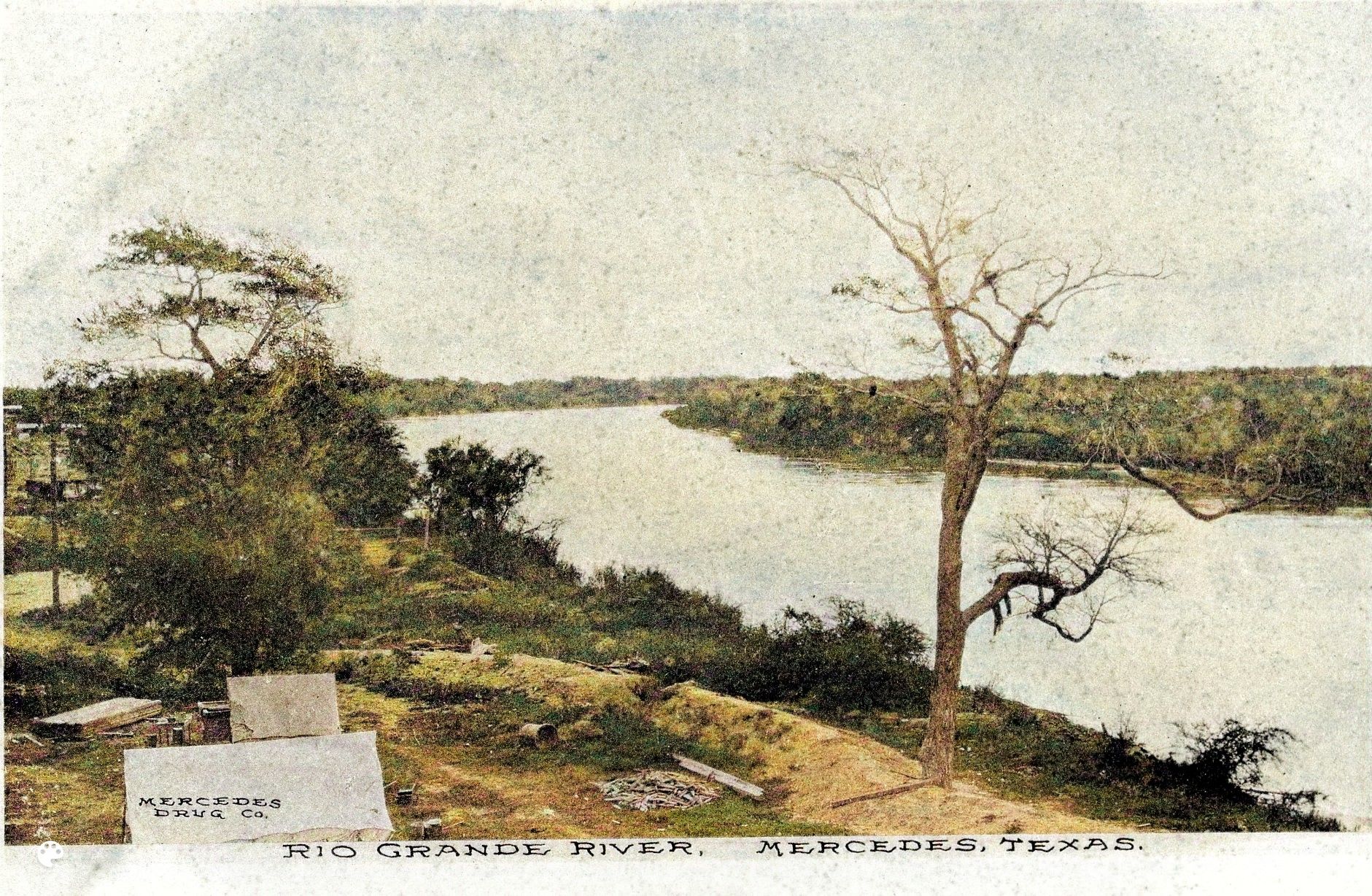 E005
Rio Grande River Supported Thriving Ecosystem of Trees and Wildlife 1912
E005
Rio Grande River Supported Thriving Ecosystem of Trees and Wildlife 1912
Founded five miles from the Rio Grande River, Mercedes was situated in a rich natural ecosystem. Native trees included Sabal palm, Honey mesquite, Paloverde, Texas Ebony, and Ratama. [76] The area hosted many species of birds, including the Crested caracara, Great Kiskadee, Altamira Oriole, Ringed kingfisher, Green Jay, and Chachalaca. Mammals such as Javelinas, Ocelots, Bobcats, and Coyotes also inhabited the region, as well as dozens of species of reptiles and amphibians.
Biodiversity has declined as habitat has been lost, some species that were once abundant are now rare. However, the area is still rich in wildlife, and some protection is provided by Santa Ana Wildlife National Wildlife Refuge, Llano Grande State Park, and other lands.
View Enlarged
View Library
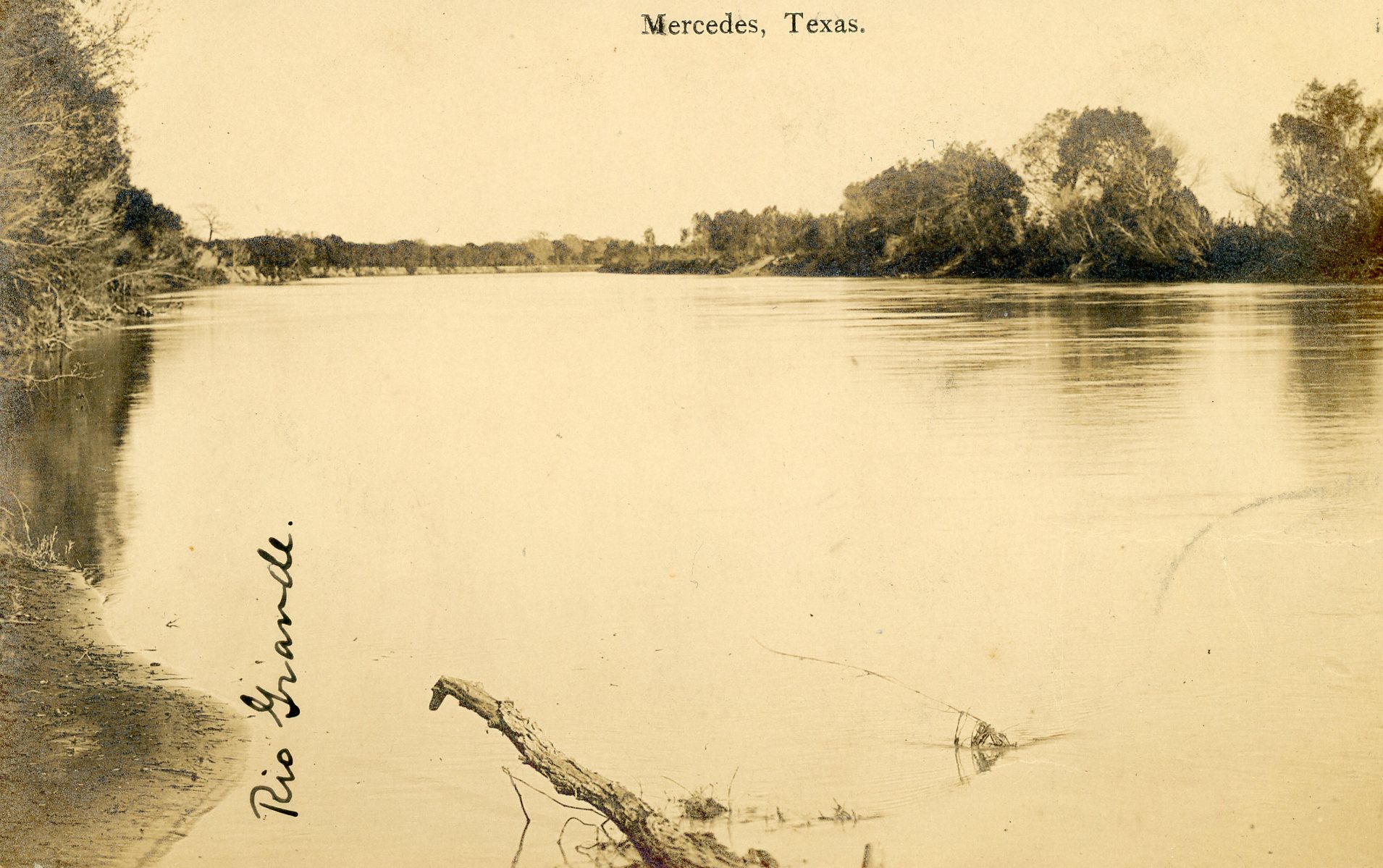 B012
Rio Grande River FIve Miles From Mercedes Marks Border with Mexico 1907
B012
Rio Grande River FIve Miles From Mercedes Marks Border with Mexico 1907
The Lower Rio Grande Valley is locally known as the Valley or RGV, and in Spanish as 'El Valle del RÃo Grande'. The region straddles the border between Texas and Mexico and is located in a floodplain of the Rio Grande River near its mouth at the Gulf of Mexico.
The postcard depicts the wide Rio Grande River near Mercedes around the early 1900s. Numerous dams and diversions have today greatly reduced the river flow so that flooding rarely occurs. Known in Mexico as the RÃo Bravo del Norte, the Rio Grande is one of the principal rivers in the southwestern United States. Originating in south Colorado and flowing to the Gulf of Mexico, the river is 1,896 miles long.
View Enlarged
View Library
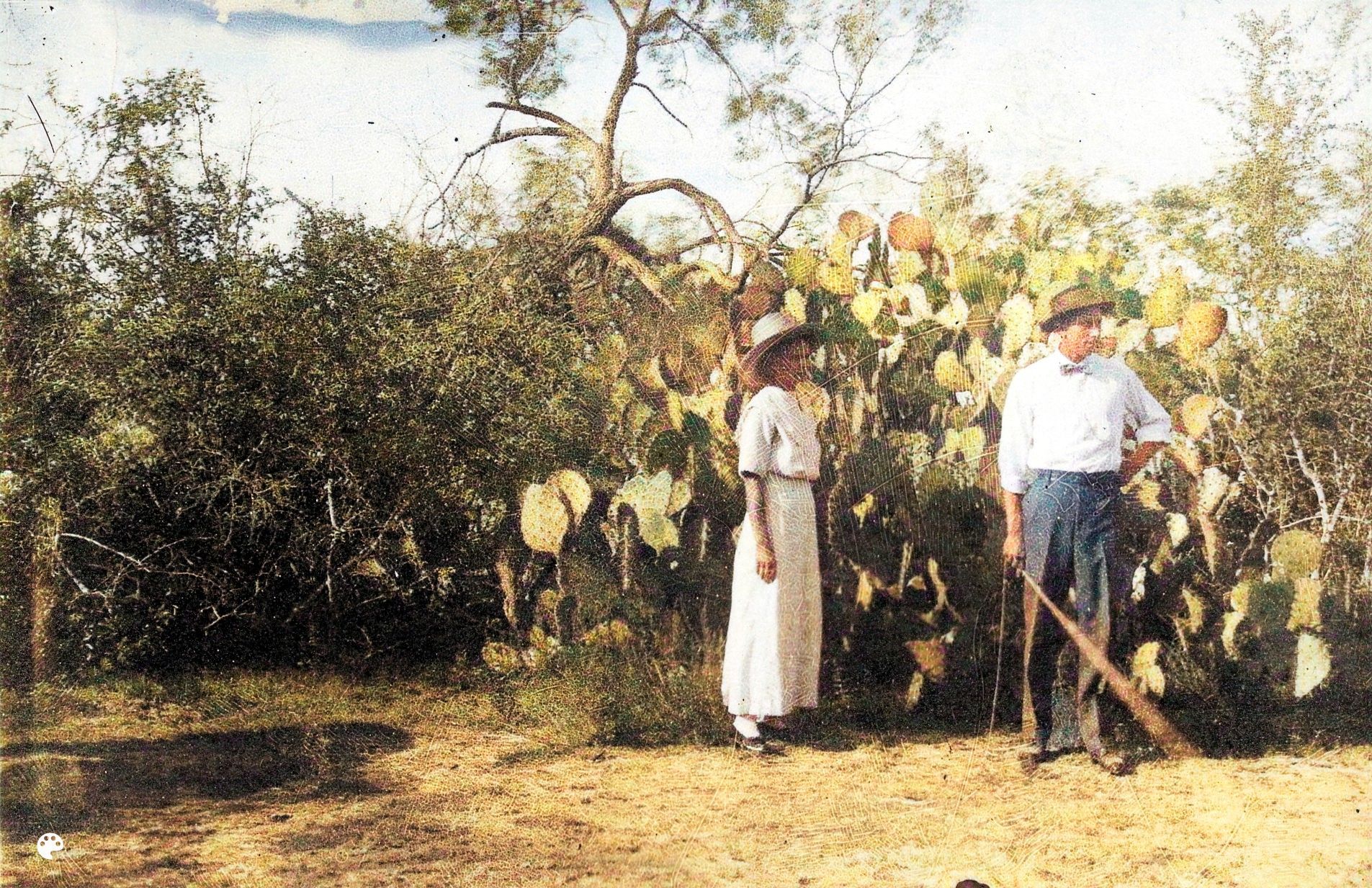 U011
Prickly Pear Cactus and Mesquite Trees near Mercedes 1913
U011
Prickly Pear Cactus and Mesquite Trees near Mercedes 1913
The postcard depicts a man and woman standing in front of mesquite trees and a large prickly pear cactus near Mercedes. Both are wearing sun hats. The man is holding a hose and watering the plants.
Prickly Pear belongs to the genus Optunia, a group of plants known for their flavorful fruit and showy flowers. The Texas prickly pear was used extensively by indigenous people for food, medicine, a source of needles, containers, and water. The large green pads are called nopales and the fruit are called tunas. Both are edible and commonly used as an ingredient in Mexican cuisine. Nopales have a thick and meaty texture with a mild flavor. The tunas are sour but tasty when sweetened. [76]
View Enlarged
View Library
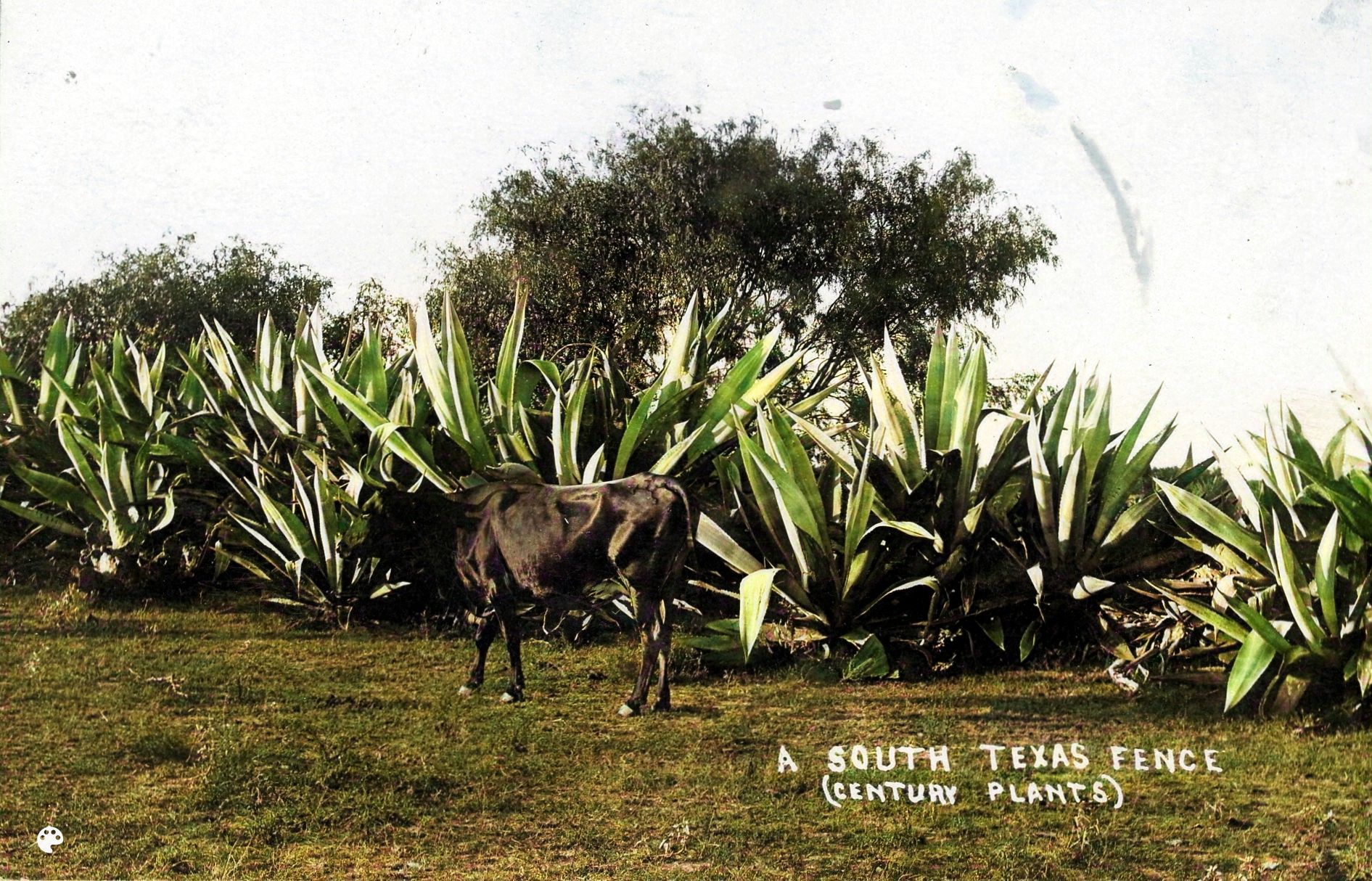 A007
Century Plants Thrive in the Rio Grande Valley 1914
A007
Century Plants Thrive in the Rio Grande Valley 1914
The postcard shows a grove of century plants and mesquite trees, along with a skinny cow. Century plants are a species of flowering plant native to Mexico and South Texas. The century plants in the image here appear to have been planted in a row to enclose livestock.
Century plants, scientifically named Agave American, live for 10 to 25 years before using of all of their reserves to produce a magnificent flower stalk that can grow up to 15 feet tall. The 'century' is an exaggeration. The original plant then dies, but is replaced by small offshoots around the base. [76] Century plants are one of several agave species that can be used to make tequila-like liquors. However, true tequila is made from blue agave, also known as Agave tequilana.
View Enlarged
View Library
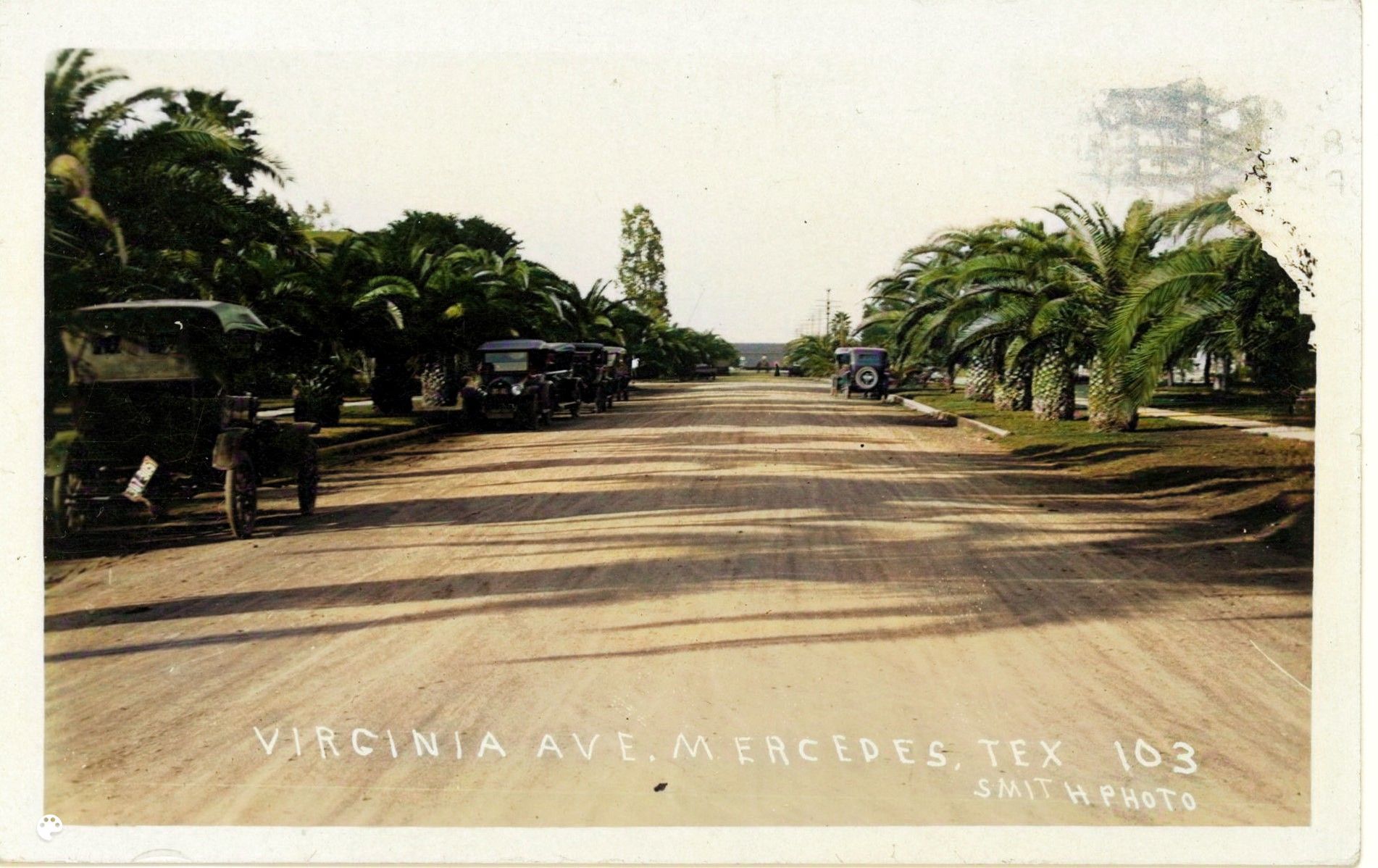 I010
Date Palms and Unpaved Street, North from Virginia Avenue and 5th 1930
I010
Date Palms and Unpaved Street, North from Virginia Avenue and 5th 1930
The postcard shows well-groomed Canary Island Date Palms (Phoenix canariensis) standing at the intersection of Virginia Avenue and 5th Street in Mercedes. Developers selected these palms over native species for their dramatic height, colorful yellow fruit, and romantic image. The species is an evergreen palm tree with a stout trunk topped with a rich green, rounded crown that frequently grows up to sixty feet tall. The palms pictured here are not mature.
However, Canary Island Date Palms are susceptible to a number of fungal diseases. This majestic species that once dominated the Rio Grande Valley skyline are now scarcely seen there. [77] Developers have since introduced many other species of palms to the area to replace it.
View Enlarged
View Library
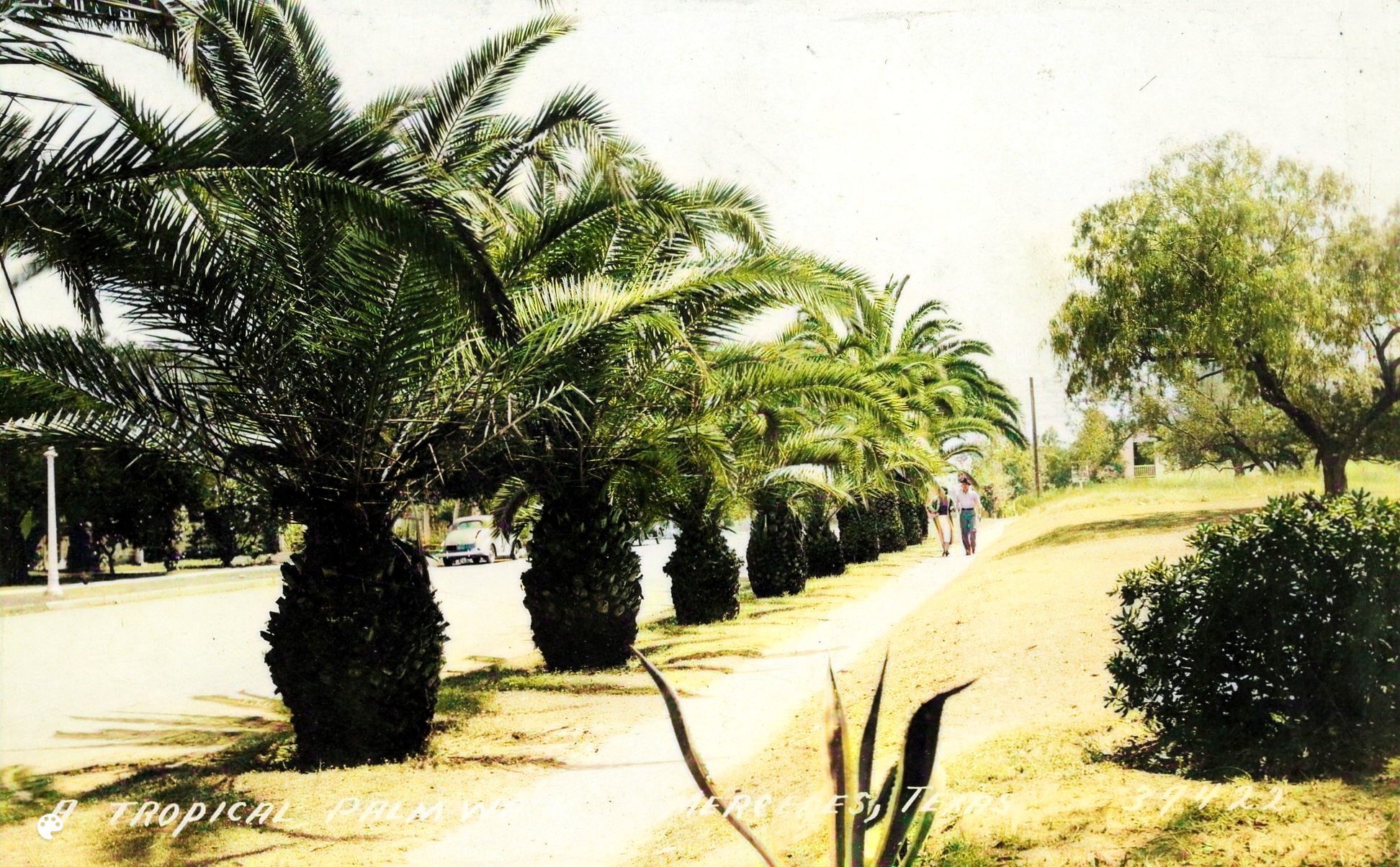 L012
Mesquite Tree on Texas Avenue of Mercedes 1940
L012
Mesquite Tree on Texas Avenue of Mercedes 1940
A couple strolled down the sidewalk on Texas Avenue, passing young Canary Island Date Palms on the left and a large mesquite tree on the right. Mesquite trees flourish throughout South Texas, where they cover at least one-third of the land area. They were a major resource for desert-dwelling Native Americans, who used the trees for food, fuel, fertilizer, fence posts, and shade for livestock. Mercedes area ranchers considered mesquite trees to be both a blessing and a curse, due to their invasiveness. Today, mesquite remains a common species in the area and is used for landscaping, fencing and outdoor cooking. [76]
View Enlarged
View Library
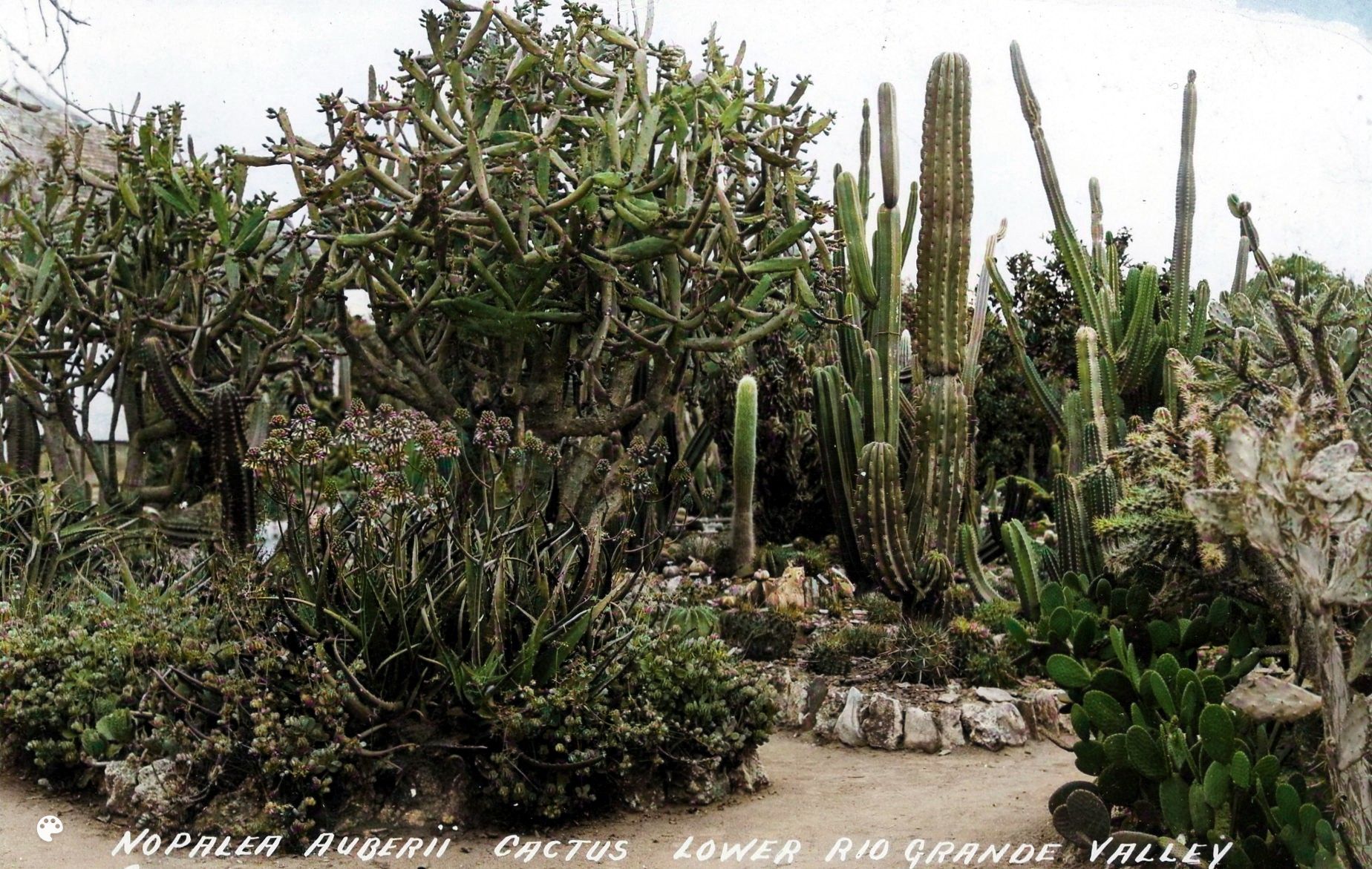 L017
Cactus Garden Featured Variety of Native Species 1940
L017
Cactus Garden Featured Variety of Native Species 1940
This cactus garden featured many cacti and succulents native to the arid climate of the Rio Grande Valley. The tall plant is an Organ Pipe Cactus and there are about six other species of cactus depicted. Many native species can still be found in unspoiled areas and preserves of the lower Rio Grande Valley. [76]
The postcard is labeled Nopalea Auberii Cactus. It may refer to Prickly Pear which has the variants named Cochineal Nopal Cactus, Nopalea cochenillifera. However, the photograph does not show any prickly pear cacti, so the reference is unclear.
View Enlarged
View Library
 L009
Resacas Form from Areas Formerly Part of the Rio Grande River 1940
L009
Resacas Form from Areas Formerly Part of the Rio Grande River 1940
Resacas are former channels of the Rio Grande River that have been cut off from the river and filled with silt and water, creating marshes and ponds. They provide wetlands for wildlife and native plant species. There were many resacas in the Valley prior to development of the flood control system. Resacas still exist near Mercedes in the areas now known as Progresso Lakes and Llano Grande State Park.
View Enlarged
View Library















